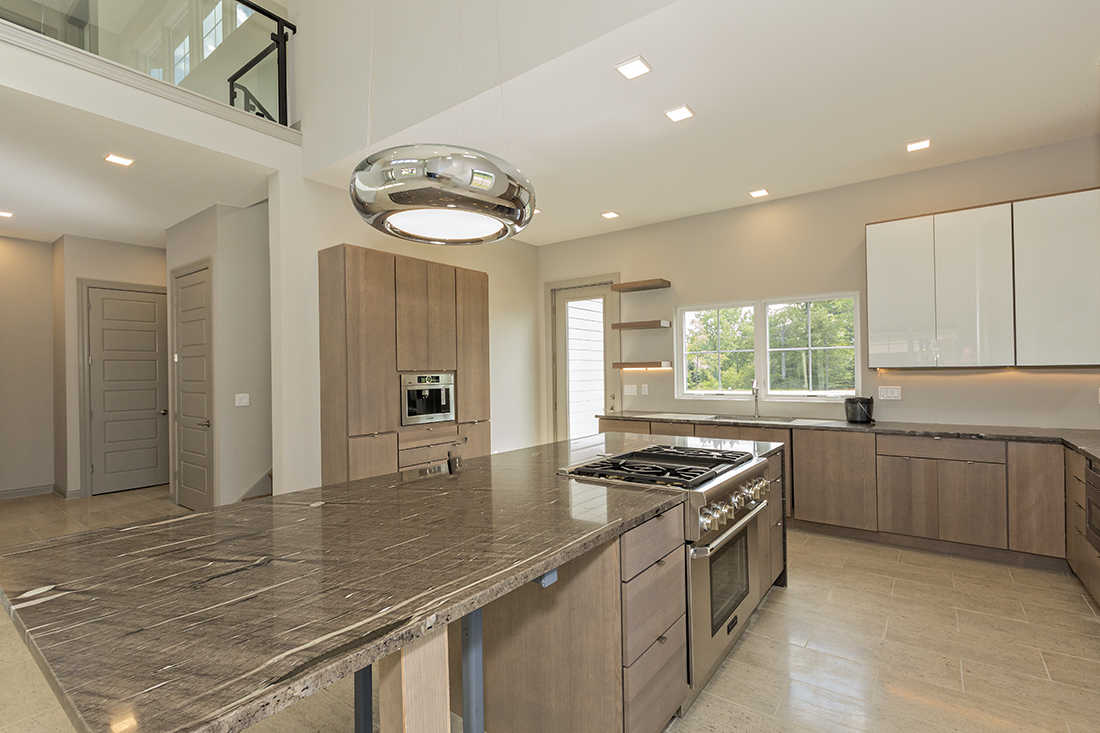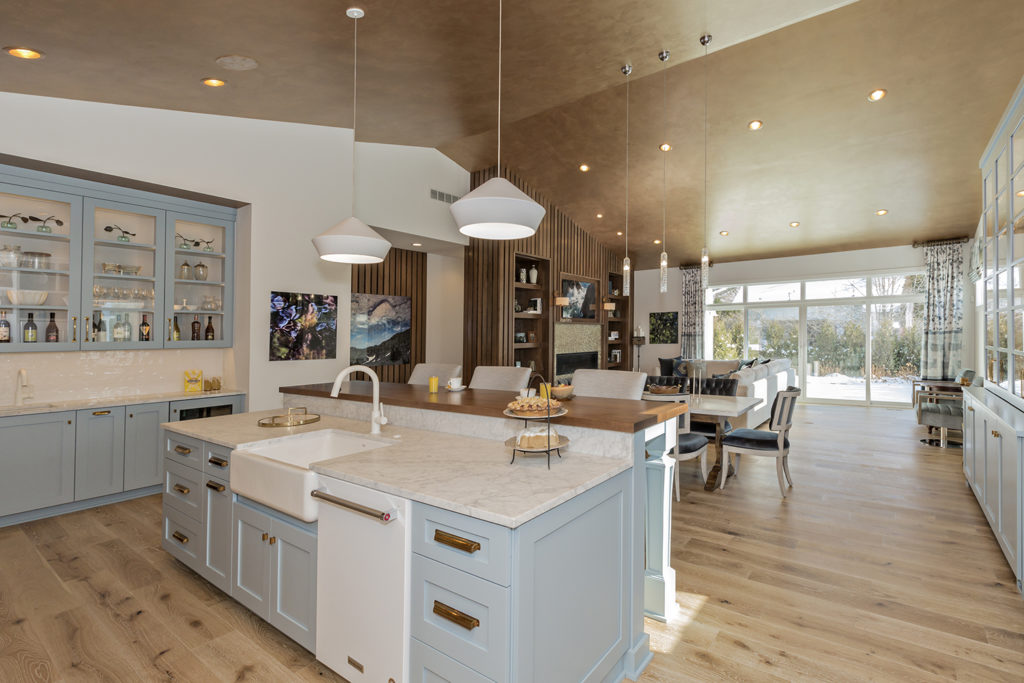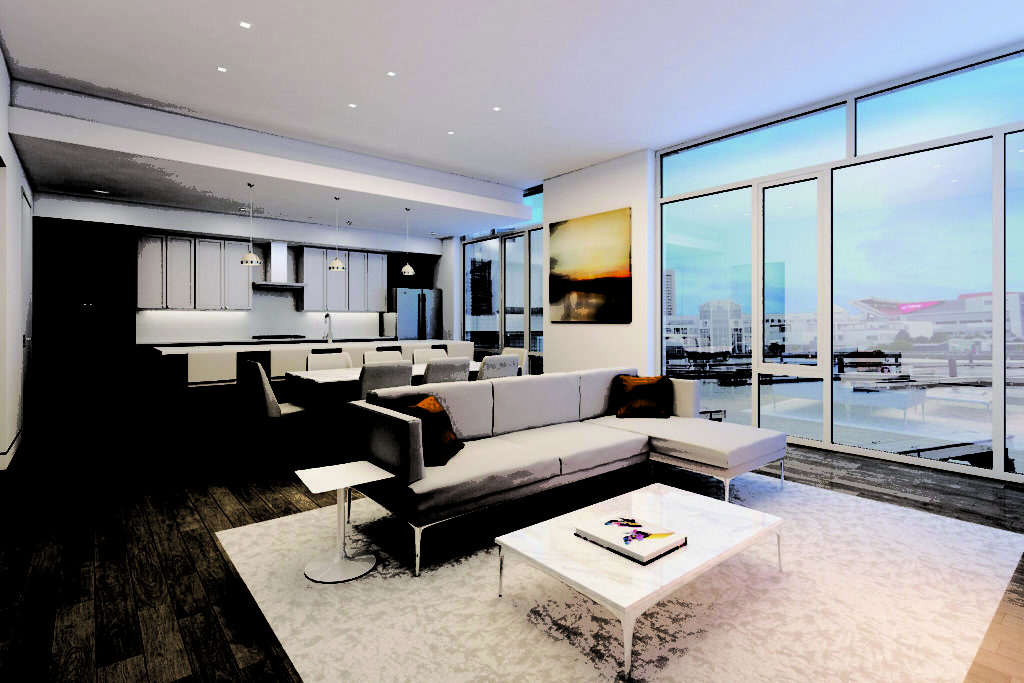One-size-fits-all homes become a thing of the past as more clients incorporate personalized plans into home building

Photo by The Orlean Company
By Michelle Jacobson
Today, building a home is like throwing paint at a white canvas. It’s an opportunity for home-owners to start from nothing and create a masterpiece of a space that is entirely personalized. More and more, home building companies are seeing clients steer away from cookie-cutter design plans and move toward individualized solutions.
Buyers prefer to be a part of the entire design process to incorporate trends that reflect their style and family life, experts say. Various design elements are incorporated to carry out those details to tell the client’s own story.
Personalized plan
Cameron Orlean, vice president of The Orlean Company in Beachwood, says a major shift in the design process “in general, is a more informed consumer base that does its research during the process. Having more access to information and available products has drawn considerable attention.”
Each home Orlean’s company builds is customized to the buyer’s desires. Design features such as finishes, cabinetry and technology systems are selected based on the client’s preferences. And often, people bring in their own interior designers to bring their ideas to life.
“This shows that the client truly understands the process and that they are invested in their ideas,” Orlean says.
Popular features buyers build into their homes to mirror their lifestyles include gyms, home theaters, and closets and shelving built into garages. They also bring in transformative elements through smart-home devices to create a leading-edge, energy-efficient space. High-tech features such as digital-door entry, thermostat products, leak-detection systems for pipes, automatic lighting systems, garage openers and car charging stations are popular trends.
Another accommodating preference Orlean has observed is placing the master bedroom on the first floor, allowing the buyer the option to live on only one floor as he or she grows older.
Small space satisfaction
No matter what age group, there are also several preferences for downsizing and living in more centralized areas.
“There is a big emphasis on community,” says Catherine Pace, project manager and leasing agent at Cumberland Development in Cleveland. “People want to find a space where they can live, work, play and learn.”
Smaller spaces are popular among those who want a second home, frequently travel, prefer walkability or work for themselves and want to use the space as an office, Pace says. By living in a central area, people can conveniently walk to work, get groceries or go out to socialize. They have more of an experience by living in close proximity to amenities.
Part of creating a living space downtown is also a way to “work with the city and bring neighborhoods to that space,” Pace adds.
By integrating certain features, living in a smaller-sized apartment can feel the same as a larger, customized home. It’s important for people to tailor their preferences into these spaces, Pace says. For example, floor-to-ceiling windows that open can make people feel like they are in an open space, with the ability to see the surrounding area.
Having a veranda is another customizable apartment feature that allows people to feel more comfortable. It serves as an extension of their living space and provides green scenery.
“It’s not just about moving into a smaller space but learning to live with only what you need,” Pace says.
As people downsize, they also figure out how to consolidate and only live with what is essential, she adds.
Luxury features
Another common design element used in smaller spaces is an open floor plan.
Jeff Halpern, president of Kingdom Homebuilders in Solon says, “As we see more people go for smaller-sized homes, they are choosing more efficient, more nesting types of floor plans.”
Instead of dividing up a space into a more formal dining room, open floor plans are composed of an area where the kitchen is open up to entertainment and eating rooms. This allows for multitasking in one space, more design freedom and offers flow for socializing.
Buyers are also paying special attention to stylistic details in the kitchen, Halpern says. A variety of materials are typically chosen to incorporate a combination of colors and materials, such as wood, marble or quartz. For instance, a marble top and wood island can be paired with cabinetry that is a different color. Not only does this design combination offer a sleek look, but it also is functional as certain countertop materials are easier to clean.
Another popular kitchen feature involves a casual bar built into a portion of the cabinetry spaces, Halpern says. The bar is set up with a set of glass cabinets, a wine rack and wine cooler. Many clients have even designed a morning bar to be placed in their master bedroom, where they have easy access to make coffee or espresso right by their bedside.
Lastly, tubs are becoming less common as a master bedroom amenity, Halpern says. Instead, more multi-head showers, with larger floor space, are being designed to incorporate a spa-type atmosphere.
For convenience and family safety, buyers incorporate apps and technology into their homes, Halpern says. This allows them to check on the home or monitor and change the temperature while away. Notifications can be sent as alerts when the doorbell rings, reassuring safe visitors.
“People are focusing more on themselves and their family when it comes to their home’s design,” Halpern says. “It’s more about their own nucleus instead of focusing on wanting a home to be big.” js
